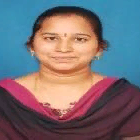International Journal of Image, Graphics and Signal Processing (IJIGSP)
IJIGSP Vol. 11, No. 8, 8 Aug. 2019
Cover page and Table of Contents: PDF (size: 815KB)
Signal Propagation Analysis at 28GHz and 73GHz Millimeter Wave bands for Next Generation Networks
Full Text (PDF, 815KB), PP.19-27
Views: 0 Downloads: 0
Author(s)
Index Terms
Wave Propagation, mmWave, coverage, capacity, rain attenuation, urban, suburban, rural, next generation communications
Abstract
Fifth generation (5G) mobile networks demand large bandwidth with the explosive growth of data driven applications. This necessitates enormous amount of spectrum in the Millimeter wave (mmWave) bands to greatly enhance the communication capacity. The mmWave band offers the potential for high-bandwidth communication channels in cellular networks. Relative to conventional networks, dense mmWave networks can achieve both higher data rates and comparable coverage. The paper presents the performance analysis of mobile networks in terms of propagation path loss, coverage probability and data rates for different mm wave operating frequencies of 28GHz and 73GHz. A scenario of multi-users in a micro cell is considered in different environments i.e. rural, sub urban and urban regions and the performance parameters in each case are analyzed. Millimeter wave cellular networks at 28GHz offer less rain attenuation compared to 73GHz and is useful for next generation communications with enhanced data rates and coverage.
Cite This Paper
P. Aruna Kumari, I. Santi Prabha, " Signal Propagation Analysis at 28GHz and 73GHz Millimeter Wave bands for Next Generation Networks", International Journal of Image, Graphics and Signal Processing(IJIGSP), Vol.11, No.8, pp. 19-27, 2019. DOI: 10.5815/ijigsp.2019.08.02
Reference
[1]Afif Osseiran, Federico Boccardi, Volker Braun, Katsutoshi Kusume, Patrick Marsch, Michal Maternia, Olav Queseth, Malte Schellmann, Hans Schotten, Hidekazu Taoka, Hugo Tullberg, Mikko A. Uusitalo, Bogdan Timus, Mikael Fallgren, “Scenarios for the 5G Mobile and Wireless Communications: the Vision of the METIS Project”, IEEE Communication Magazine, Volume: 52, Issue: 5, pp. 26-35, 2014.
[2]C X Wang, F Haider, X Gao, X Hu You, Y Yang, D Yuan, H Aggoune, H Haas, S Fletcher, “Cellular architecture and key technologies for 5G wireless communication networks,” IEEE Communication Magagine., vol. 52, no. 2, pp. 122–130, 2014.
[3]Federal Communication Commission, ‘Spectrum Frontiers R&O and FNPRM: FCC16-89, Jul. 2016, [online] Available:https://apps.fcc.gov/edocs_public/attachmatch/FCC-16-89A1.pdf, 2016.
[4]G. R. Maccartney, Jr., T. S. Rappaport, S. Sun, and S. Deng, “Indoor office wideband millimeter-wave propagation measurements and channel models at 28 and 73 GHz for ultra-dense 5G wireless networks,”IEEE Access, vol. 3, pp. 2388–2424, 2015.
[5]George R. MacCartney, Theodore S. Rappaport, Amitava Ghosh, “Base Station Diversity Propagation Measurements at 73 GHz Millimeter-Wave for 5G Coordinated Multipoint (CoMP) Analysis”, Globecom Workshops (GC Wkshps), IEEE, 2017.
[6]ITU-R, ‘Attenuation by atmospheric Gases’ Tech. Rep. P676-11, 2016.
[7]Li, Q.C., Niu, H., Papathanassiou, A.T., Wu, “5G network capacity: Key elements and technologies”, IEEE Vehicular Technology Magazine, Volume 9, Issue 1, Article number 6730679, pp. 71-78, 2014.
[8]Mukesh Chandra Kestwal, Sumit Joshi, and Lalit Singh Garia, “Prediction of Rain Attenuation and Impact of Rain in Wave Propagation at Microwave Frequency for Tropical Region (Uttarakhand, India)”, International Journal of Microwave Science and Technology, Volume, Article ID 958498, 6 pages, Technol. Conf. (VTC-Spring), pp. 1-6, 2014.
[9]Mathew K. Samimi, Theodore S. Rappaport, and George R. MacCartney, Jr “Probabilistic Omnidirectional Path Loss Models for Millimeter-Wave Outdoor Communications”, IEEE Wireless Communications Letters, Volume. 4, no.. 4. pp. 357-360, 2015.
[10]METIS2020, “METIS Channel Model,” Tech. Rep. METIS2020, Deliverable D1.4 v3, [Online]. Available: https://www.metis2020.com/wpcontent/ uploads/METIS, 2015.
[11]Muhammad Shahmeer Omar , Muhammad Ali Anjum, “Performance analysis of hybrid 5G cellular networks exploiting mmWave capabilities in suburban areas” , IEEE International Conference on Communications (ICC), 2016.
[12]S. Akoum, E. O. Ayach, R. W. Heath "Coverage and capacity in mmWave cellular systems", Proc. 46th ASILOMAR, pp. 688-692, 2012.
[13]S. Sun, Theodore S. Rappaport, Sundeep Rangan, Timothy A. Thomas, Amitava Ghosh ,Istv, nZ.Kovcs, Ignacio Rodriguez, OzgeKoymen, Andrzej Partyka, and Jan J̈arvel ainen "Propagation path loss models for 5G urban micro-and macro-cellular scenarios", Proc. IEEE 83rd Veh, 2016.
[14]Theodore S. Rappaport, Shu Sun, Nimma Mayzus, HangZhao, Yaniv Azar, Kevin Wang, george n. Wong1, Jocelyn K. Schulz, Mathew Samimi and Felix gutierrez “Millimeter Wave Mobile Communications for 5G Cellular: It Will Work!”, IEEE Access, Vol. 1, pp. 335-349, 2013.
[15]T. S. Rappaport, R. W. Heath, Jr., R. C. Daniels, and J. N. Murdock, “MillimeterWaveWireless Communications”. Englewood Cliffs, NJ, USA:Prentice-Hall, 2015.
[16]Theodore S. Rappaport, Yunchou Xing, George R. MacCartney, Andreas F. Molisch, Evangelos Mellios, Jianhua Zhang, “Overview of Millimeter Wave Communications for Fifth-Generation (5G) Wireless Networks—With a Focus on Propagation Models”, IEEE Transactions on Antennas and Propagation, vol. 65, pp. 6213-6230, 2017.
[17]Xianghao Yu, Jun Zhang, Jun Zhang “Coverage analysis for dense millimeter wave cellular networks: The impact of array size” IEEE Wireless Communications and Networking Conference (WCNC), - Track 2 - MAC and Cross Layer Design, pp. 17-22, 2016.
[18]Z. Pi, F. Khan, "An introduction to Millimeter-wave mobile broadband systems", IEEE Communication. Magazine, vol. 49, no. 6, pp. 101107, 2011.
[19]38.901V13GPP, “Technical specification group radio access network; study on channel model for frequencies from 0.5 to 100GHz(Release14),”3rdGenerationPartnershipProject(3GPP),TR.0.1,Mar.2017.[Online].Available:http://www.3gpp.org/DynaReport/38901.html.

